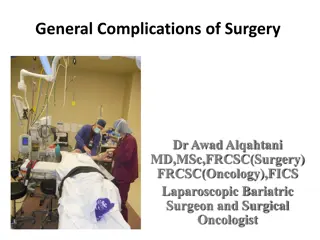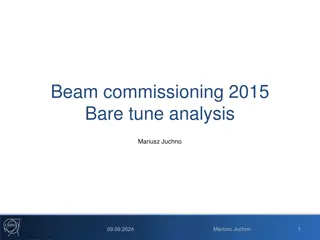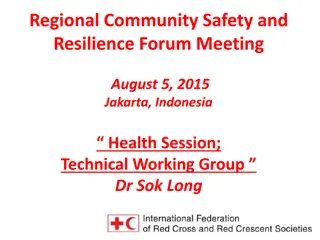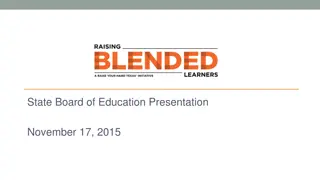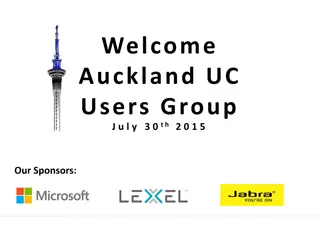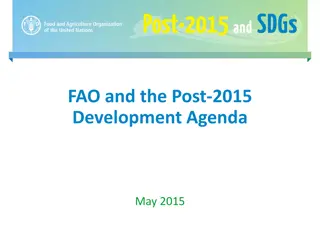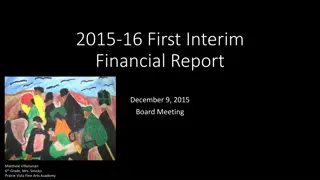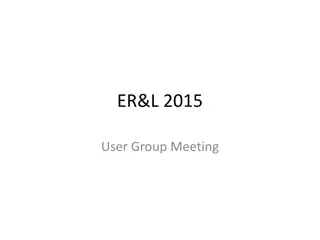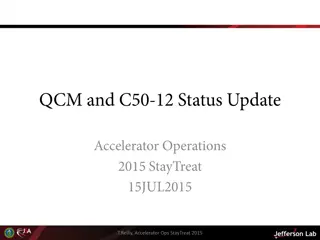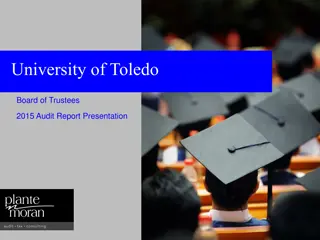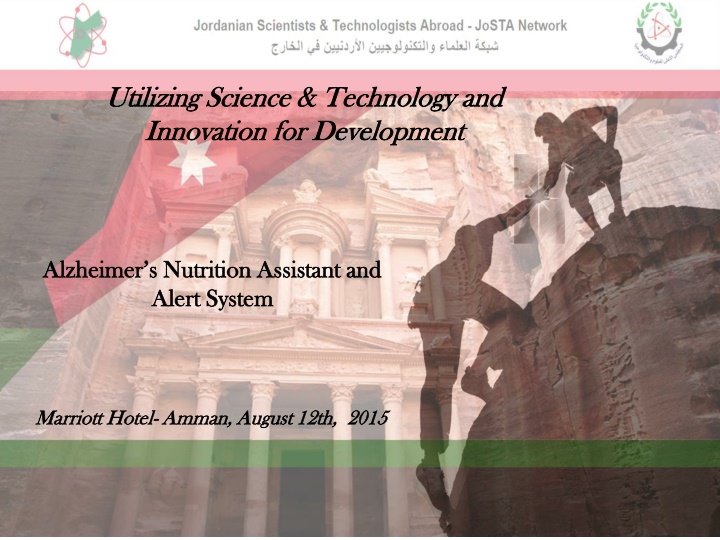
Innovative Alzheimer's Nutrition Assistant and Alert System Development
"Explore the development of a groundbreaking device aiding Alzheimer's and Dementia patients with their nutrition, enhancing caregivers' support and daily lives through technology and innovation."
Download Presentation

Please find below an Image/Link to download the presentation.
The content on the website is provided AS IS for your information and personal use only. It may not be sold, licensed, or shared on other websites without obtaining consent from the author. If you encounter any issues during the download, it is possible that the publisher has removed the file from their server.
You are allowed to download the files provided on this website for personal or commercial use, subject to the condition that they are used lawfully. All files are the property of their respective owners.
The content on the website is provided AS IS for your information and personal use only. It may not be sold, licensed, or shared on other websites without obtaining consent from the author.
E N D
Presentation Transcript
Utilizing Science & Technology Utilizing Science & Technology and Innovation Innovation for Development for Development and Alzheimer s Nutrition Assistant and Alzheimer s Nutrition Assistant and Alert Alert System System Marriott Hotel Marriott Hotel- - Amman, August 12th, Amman, August 12th, 2015 2015
Project Team Project Team Dr. Emad Dr. Emad Awada Assistant Professor of Electrical Engineering Assistant Professor of Electrical Engineering Applied Applied Science Private Science Private University, Amman, Jordan Amman, Jordan Awada University, Dr Dr. Ikhlas . Ikhlas Abdel P Professor of Electrical and Computer Engineering rofessor of Electrical and Computer Engineering Western Western Michigan Michigan University, University, Kalamazoo, Michigan, USA Kalamazoo, Michigan, USA Abdel- -Qader, PE Qader, PE
Brief Description Brief Description Alzheimer s Nutrition Assistant and Alert System Alzheimer s Nutrition Assistant and Alert System Nutrition Assistant and Alert System is a project aimed at developing a prototype of a device that enables monitoring and prompting patients with reduced cognitive abilities such as in Alzheimer s and Dementia patients. The device is an embedded system developed using Digital Signal and Image Processing techniques to enable the extraction of required signature features from captured video images and audio signals. The hybrid classification techniques will allow for a decision to be declared on the status of the ongoing eating process if any and alert the caregiver if the patient is not eating, or done eating. The SW and HW together will bring on a device that can enhance daily lives for millions in the business of caregiving of patients or loved ones.
Justifications Justifications Feeding is a serious problem for people who are suffering from Dementia or Alzheimer s diseases. When a loved one loses his cognitive abilities due to Dementia and Alzheimer, a nursing aid or caregiver will have to continuously monitor the patients and periodically reminding them to eat or do feed the patient themselves. Individual patient monitoring and prompting require a considerable amount of time and attention, severely limiting the caregiver s ability to perform other tasks or deal with multiple patients in a nursing home. The cognitive impairment found in persons with Dementia often prevents the older adult from accepting help with feeding from caregivers. Similarly, for patients who live at home, this device will ease the burden on their loved ones since they have to go to work and live their daily lives without worrying if their elder has eaten the food they placed in front of them.
Objectives Objectives We are proposing to develop a system that will use various sensors to monitor a patient, to determine if and when food is eaten, and swallowed, and when it is necessary to provide both audio and video prompting. In addition, coaching to guide the patient to continue or even to start eating as needed. Currently there is no such device or technology that addresses this need while the need for it is growing rapidly. This system can also be used for people with other eating disorders such as obese people who need to watch their food intake. Such a system can be a private monitor to remind them of things such as eating slowly or to stop based on ongoing events.
Scope of work, Duration, and Scope of work, Duration, and Estimated Budget Estimated Budget Patient Scope of work: This work aims to develop a prototype of biomedical engineering device to monitor, prompt, and alert the activity of Alzheimer s patients (particularly eating). Duration: 2 years http://www.clipartlord.com/wp-content/uploads/2014/02/mobile-phone3.png Estimated Budget : 100k JD
Methodology of Implementation Methodology of Implementation The system will be composed of multiple sensors and software modules to be infused in one embedded system as follows: 1) Data Acquisition Phase: Captured videos will be transmitted to a microcontroller, and using written code, we will extract the features and clues on the activity of the patients. The algorithms will allow for tracking such activities and extracting those aimed for features such as: the hand movement between the tray and mouth, food consumption on the serving tray, and mouth movement cues extracted from jaw movement while eating. Chewing sound will also be utilized in this system using a sound sensor. 2) Data Processing Phase: Using several image processing techniques including preprocessing, filtering, feature extraction, feature matching among video frames, and machine learning techniques.
Methodology of Implementation Methodology of Implementation 3) Outcomes will be wirelessly transmitted using Wi-Fi network for charting and record keeping and/or for alerting caregiver. Patient 4) The system can be also easily modified to communicate with earpiece or mobile texting for individuals with eating disorder suffering from obesity or other food related disorder. http://www.clipartlord.com/wp-content/uploads/2014/02/mobile-phone3.png
Expected Output Expected Output 1. An Alzheimer Nutrition System Prototype will be developed. 2. Hardware and software implementation using Digital Signal and Image Processing techniques will enable the device to extract required features from captured video (images and audio signals), and using a hybrid classification technique will be implemented. 3. Patent application will be submitted. 4. Work will also be published with full acknowledgment to JoSTA. 5. Other sponsors/investors will be sought.
Impact Impact The proposed device will be the first aimed to aid with the care of Alzheimer s and other Dementia patients. This will positively impact millions of lives. Worldwide- nearly 44 million people have Alzheimer s or a related Dementia. (Alzheimer s Disease International) Alzheimer s and other dementia disease s are the top cause for disabilities later in life. (Alzheimer s Disease International) http://www.alzheimers.net/resources/alzheimers-statistics/ Feeding difficulty is often recognized as a common problem for older adults and is associated with weight loss, poor nutrition, and risk for aspiration pneumonia. The proposed device can also be used for patients with eating disorders. Leading to significant product development and economic growth.
Sustainability Sustainability The prototype has strong potential for commercialization which will also lead to economic development. In addition, this particular study and innovation can be expanded to other applications in the Biomedical Engineering Field.
Action Plan Action Plan The prototype will be built in two years into two systems, each has SW and HW components as follows: 1) Vision sensors, Data collection and Fusion: Sensors will be used to track and extract the specific signature information needed for the detection. September 2015- May 2016. 2) Processors. September 2015-May 2016. A. System 1, using a tablet. This one will be cheaper and simpler to use. B. System 2 will be based on the Raspberry Pi 2 microcontroller. This one will have more capabilities and allow customer to edit and adapt. 3) Testing in real life on patients in nursing homes. May 2016-July 2017. 4) Submitting a patent application. May 2016. 5) Patient/User Friendly Features. October 2016- January 2017. Several add on features will be implemented too. 6) Publishing, and project reporting and submission to funding agency January 2017- July 2017.

